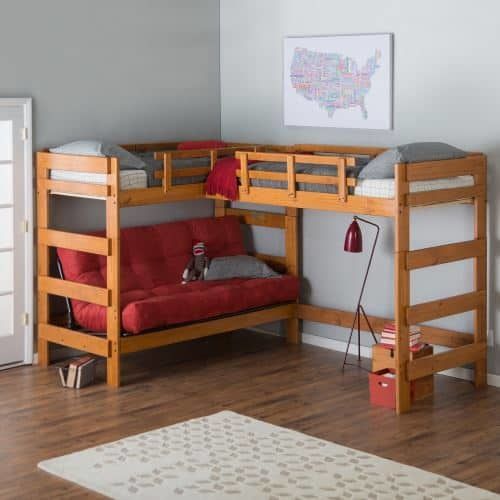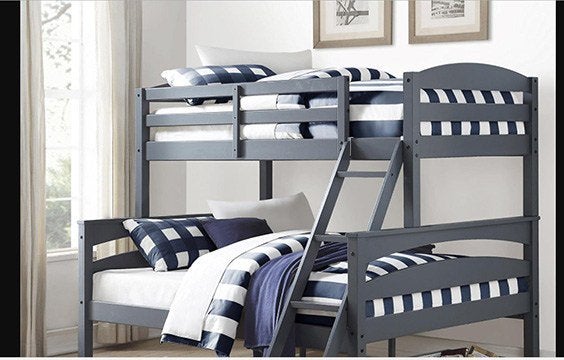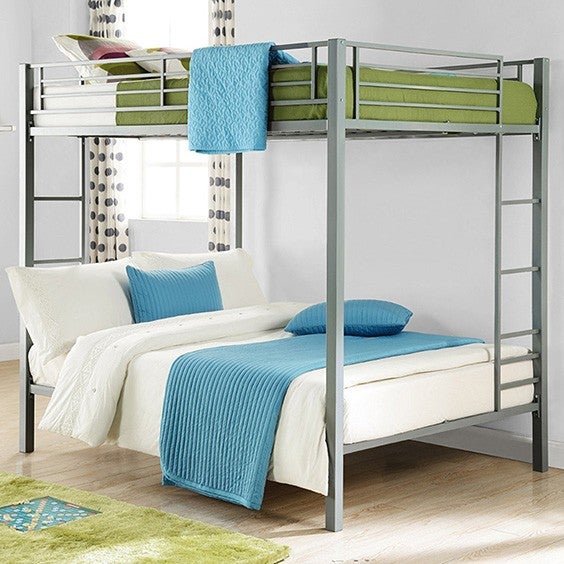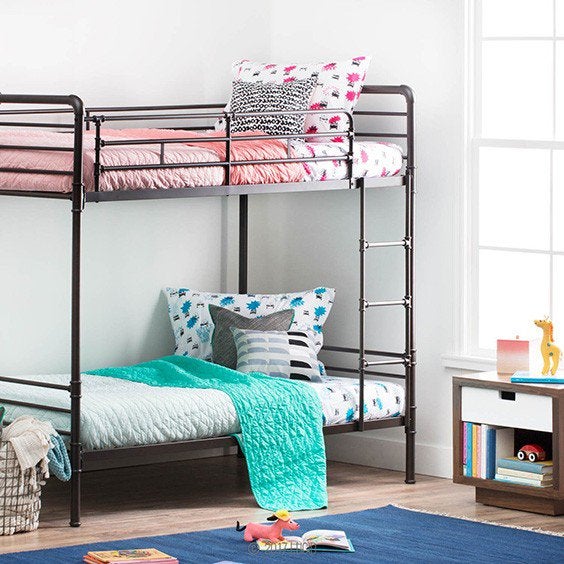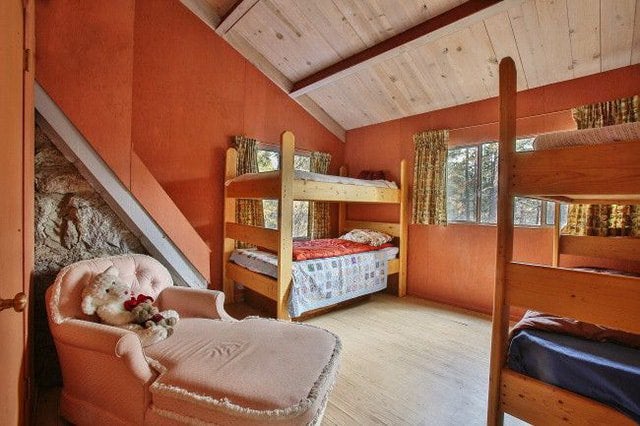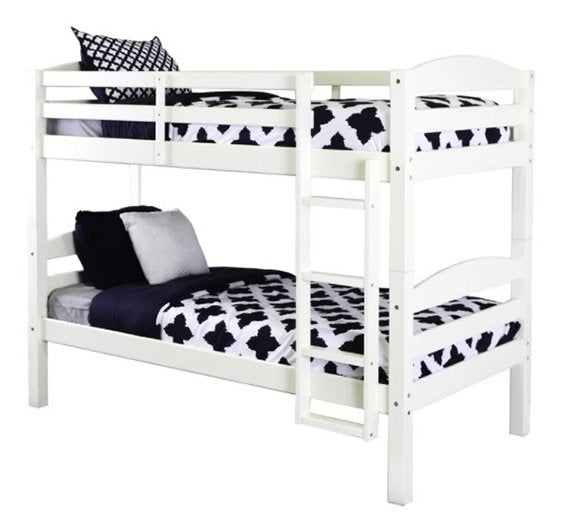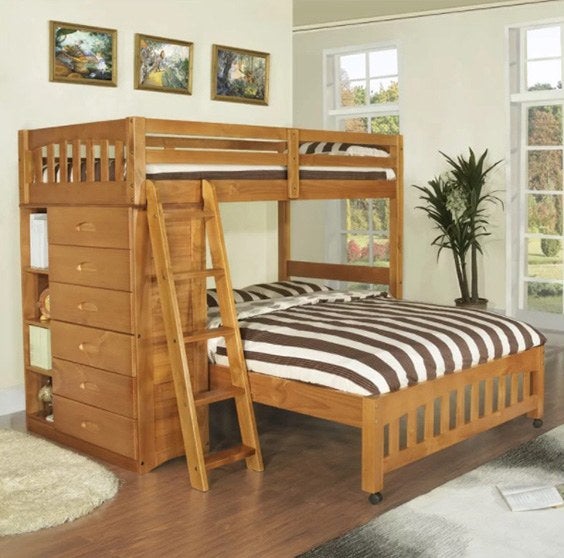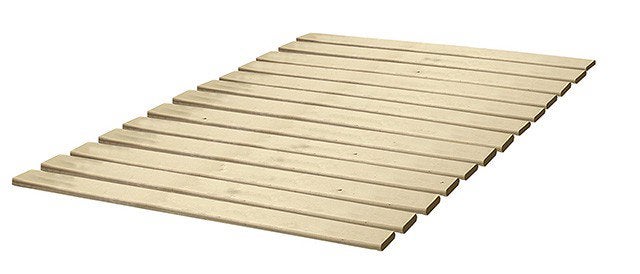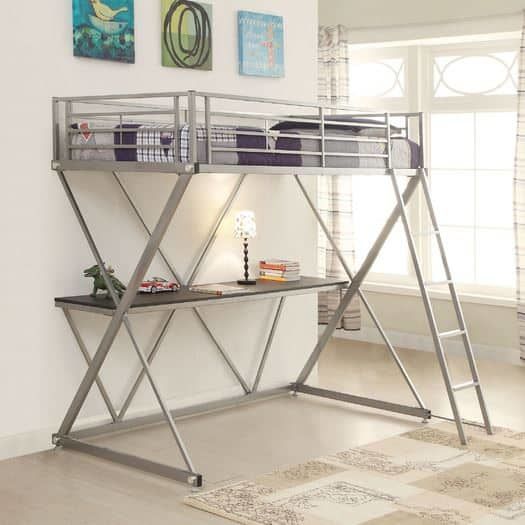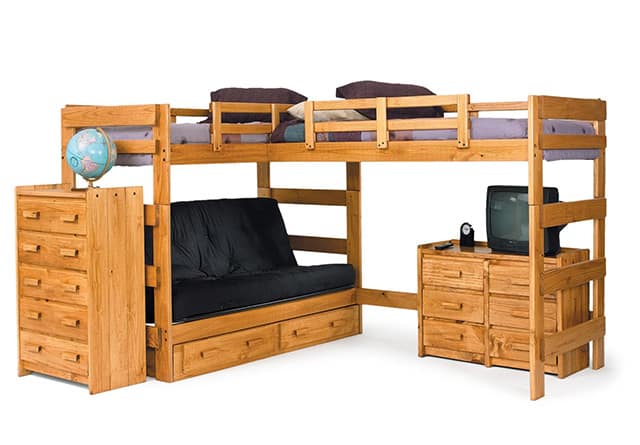Redecorating can be overwhelming at its best and downright impossible at its worst! Whether you have ample space and an unlimited budget or a smaller floor area with a tighter wallet, redecorating and deciding on new furniture can be a daunting task when faced with the options on the market today.
A person who has a smaller space to work with during their redecorating or someone who is looking for a multi-purpose piece of furniture for either their children or guests will often lean towards purchasing a bunk bed or loft bed to meet their needs compared to just having a single bed. But isn’t a bunk bed a loft too? They are usually advertised in the same sections, so this mistake is made frequently! So why are they different when the bed is similar in style, function, and price? Let’s find out!
Breaking It Down
A bunk design is defined as a pair of raised beds built on top of one another, and it is supported by four posts which feature either an attached ladder or built-in stairs for easy access to the upper bunk. This bed can range in price, depending on the options wanted or the style of frame (wood, metal, etc.).
A loft bed is similar to the style of a bunk design, with a slightly higher price tag, as it is a raised bed supported by posts, but instead of a bottom bunk, there is an open space. Typically, a desk or chest of drawers can be found in this space, and the more comprehensive, pricier models may feature desks or storage features already built as part of the frame.
So what is the best option for you to purchase for either yourself or someone else when limited on space and money? Throughout this article, we will compare both styles of beds and their unique features to alleviate the stress of making your choice!
Why Buy a Bunk Bed?
You are purchasing new furniture for your child’s room, and they are begging for bunk beds for when their friends come for a sleepover! Perhaps your house is the unofficial crash pad to your extended family and guests during the holiday season, which means a bunk bed is easiest when sleeping a large number of people. The top bunk can be used for storage if needed, or the bottom bunk can be extended to a double bed on higher-priced models.
The top of the line models even offers the option of a trundle that is stored away under the lower bunk. Bunk beds sleep more people without additional floor space needed for multiple beds. These beds use only mattresses for support thanks to the built-in “bunkie board”, which is where your mattress is located. Bunk beds can be used throughout childhood as well, starting with models for toddlers that gradually extend to a bed suitable for a teen or young adult.
Pros
- Floor space-saving option
- Multiple sleeping spaces
- Eliminate the need for a box spring/mattress combo
- Various sizes for each sleeper
Cons
- Lack of support for long-term sleep
- Creates sleeping space, not storage space
Floor Space-Saving Option
If you are living in a small apartment or living in a big city with a couple of small children, the amount of floor space available for a bed along with all other bedroom necessities can decrease rapidly. A bunk bed will offer multiple-person sleeping without sacrificing floor space.
Multiple Sleeping Spaces
A bunk design can sleep two people at the minimum with the option of up to approximately five people. The high-end models of bunk beds can offer a twin bed for the upper bunk, a double size as the bottom bunk, and a trundle (roughly the size of a twin) attached to the lower bunk.
Eliminate the Need for a Box Spring/Mattress Combo
Trying to find the right mattress with the correct box spring can be a pain when presented with numerous options and prices. A bunk design already has a built-in support system for the mattress, which not only saves you the stress of trying to find the right combo, but it can save you a few dollars in the meantime.
Various Sizes for each Sleeper
Bunk beds are available in a variety of sizes and options as touched on briefly above, but they can also come with extendable parts and changing styles to suit from a toddler age to a young adult. The bunks will then extend to fit a taller teen and the only thing required would be a new mattress!
Lack of Support for Long-Term Sleep
Bunk beds have come a long way from the past when they were roughly designed with blocks of wood and a hay mattress, but they can still wreak havoc on a person’s frame. The railings found on the upper bunk can feel binding to some people, and the lack of a box spring can create a hard sleeping surface as the mattress sags to the “bunkie board”
Why Buy a Loft Bed?
You may want to read: Best Loft Beds
The loft bed is the close cousin of a bunk bed with distinctive enough features for you to tell the difference, but a definite relation can be seen. Loft beds are raised by supports to allow the sleeper to capture the “sleeping high” feeling but without a secondary bunk directly below you. If you find your area space of your bedroom is not sufficient enough to have both a bed and desk or bed and chest of drawers, the loft bed might be right for you. Loft beds can be designed with a variety of materials from wood to plastic to metal and will range in price depending on the style you choose.
Pros
- Create storage space
- Utilizes vertical space
- Built-in Features
Cons
- Higher cost
- Making the bed
Create Storage Space
Storage space can be hard to come by when living in a small apartment or bungalow. Loft beds earn their higher price tag by featuring built-in drawers and offering open space under the bed for a desk or workstation.
Utilizes Vertical Space
Like the bunk bed, a loft bed is raised off the ground by support posts, which allows for less horizontal space used for your bed. This decrease in horizontal space used for the bed will allow you to decorate with more options, like a makeup mirror.
Built-in Features
The wide variety of construction designs found in loft beds will offer the option of purchasing storage space with your bed. The majority of loft beds have a chest of drawers and/or a desk already built into the bottom part of the frame. Loft beds use roughly the same amount of floor space as a set of bunk beds without losing storage.
Higher Cost
Due to the larger number of features available over a bunk bed, the cost of a loft bed is higher for just the frame alone.
Making the Bed
You may want to read: Best Bunk Bed Mattresses
A loft bed can be difficult and awkward to make or change the sheets because it’s against the wall along with the up-in-the-air design. A person has to balance on the ladder or stairs and tug the blankets into place, creating a safety hazard.
Bunk Bed vs Loft Bed Comparison
| Bunk Bed | Loft Bed |
|---|---|
| Bottom bunk – can be extended to a double bed | Bottom bunk – built-in desk or workstation |
| Materials – wood, metal, etc. | Materials – wood, plastic and metal |
| Top bunk -can be used for storage if needed | Top bunk -sleeping area |
| Multiple sleeping spaces | Limited sleeping spaces |
Bottom Line
A new bedroom is an expensive renovation that will not be repeated in the near future, so you want to make sure that you have all the best furniture and accessories needed. But what should you buy? A bunk bed or a loft bed? There is not necessarily a wrong and right choice when it comes to what bed should you purchase, but rather, the question you should ask is “what bed would best suit your lifestyle and current living arrangements?” If you are living in a studio apartment or you are raising a family in a smaller bungalow, bunk beds are probably the way to go to utilize space and provide open areas in your bedroom. If you are living alone or as a student, a loft bed may be the best option due to the fact that it has a built-in desk or workstation. Look at all the options and research pricing, sizing, and available features that can make or break your purchase!
